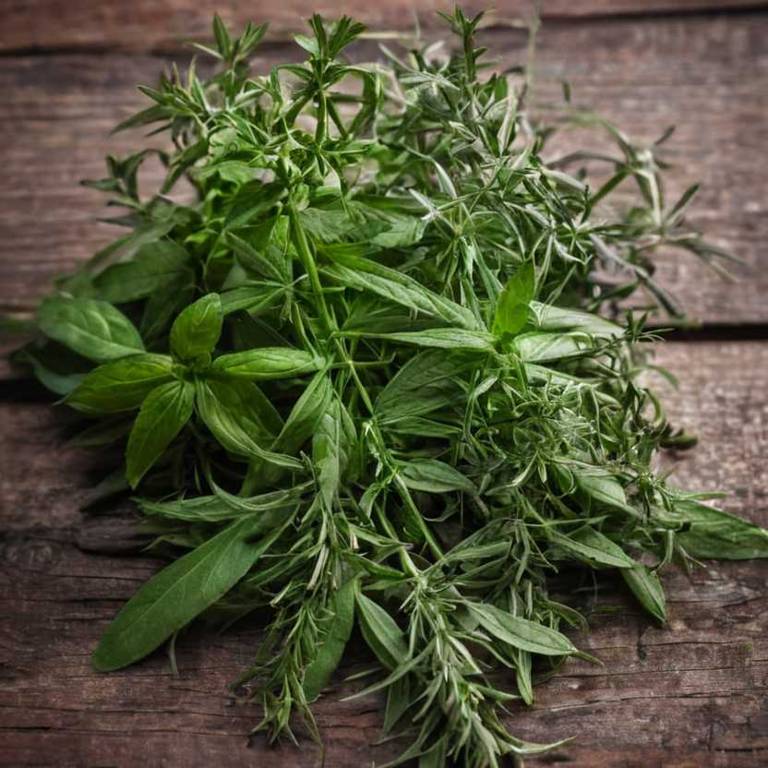Chinese Lantern (Benincasa Hispida)
Information Reliability Score: 5/10
This score reflects the overall reliability of the information presented in this article. It is based on the quality of scientific evidence, accuracy of sources, and the transparency of references related to Benincasa hispida.
 Chinese Lantern, scientifically known as Benincasa hispida, is a flowering plant commonly used in traditional Chinese medicine and as a spice. It is primarily valued as a medicinal herb and adaptogen, known for its ability to support the immune system and promote digestive health. Traditionally, it has been used in Chinese culture to treat respiratory ailments, inflammation, and digestive disorders, often in the form of soups or teas. In modern wellness practices, it is gaining popularity for its potential anti-inflammatory and antioxidant properties, making it a sought-after ingredient in health supplements and natural remedies. One of its unique features is the presence of a rare active compound called cucurbitacin, which contributes to its distinctive bitter flavor and therapeutic effects.
Chinese Lantern, scientifically known as Benincasa hispida, is a flowering plant commonly used in traditional Chinese medicine and as a spice. It is primarily valued as a medicinal herb and adaptogen, known for its ability to support the immune system and promote digestive health. Traditionally, it has been used in Chinese culture to treat respiratory ailments, inflammation, and digestive disorders, often in the form of soups or teas. In modern wellness practices, it is gaining popularity for its potential anti-inflammatory and antioxidant properties, making it a sought-after ingredient in health supplements and natural remedies. One of its unique features is the presence of a rare active compound called cucurbitacin, which contributes to its distinctive bitter flavor and therapeutic effects.
FREE COURSE
How to make medicinal herbl tinctures for common ailments at home and in a weekend (using the Healing Drop System).

Table of Contents
Scientific and Botanical Profile
Chinese Lantern, with botanical name Benincasa hispida, is a member of the Cucurbitaceae family, commonly known as the gourd or cucumber family. Native to regions across Asia, including India, China, Indonesia, Malaysia, the Philippines, Japan, Vietnam, Taiwan, Borneo, Sumatra, Java, Sri Lanka, and Cambodia, this species has been cultivated for centuries for its unique fruit and ornamental value. Morphologically, Benincasa hispida is a vigorous trailing or climbing annual vine with hairy, ridged stems and large, heart-shaped leaves that are often lobed. The fruit, which is the most distinctive feature, is spherical to oval, covered with spiny tubercles, and turns bright orange to red when ripe, often resembling a lantern or a small melon. It is also known by numerous common names such as Chinese Okra, Horned Melon, Horn Of Plenty, Cigar Plant, Cucumber Melon, Red Lantern, Fruit Of The Morning Glory, Wax Gourd, Hairy Gourd, Thorn Apple, Hairy Cucurbit, Spiny Globe Gourd, Spiny Apple, Spiny Gourd, Spiny Globe Gourd, Hokkaido Melon, Hispida Gourd, and Cucurbita Pepo.History and Cultural Relevance
Chinese Lantern was used in ancient China as both a decorative and symbolic element in festivals, particularly during the Mid-Autumn Festival and the Lantern Festival, where it represented hope, prosperity, and the connection between heaven and earth. Historically, the plant, known as Benincasa hispida, has also been valued in traditional Chinese medicine for its purported ability to aid digestion and reduce inflammation, with its fruit being used to treat ailments such as diarrhea and stomach discomfort. In various folk traditions, the lanterns were believed to ward off evil spirits and bring good luck, often displayed during moonlit nights and special ceremonies. Today, while the fruit is no longer widely used in medicinal practices, its historical significance remains in cultural celebrations and art, preserving its legacy as a symbol of both beauty and tradition. The enduring presence of the Chinese Lantern in cultural rituals highlights its deep-rooted importance in both historical and contemporary contexts.Chemical Composition and Nutritional Profile
Chinese Lantern contains a variety of bioactive compounds, including alkaloids, flavonoids, and terpenes, which contribute to its medicinal properties. It is also rich in essential oils, which provide aromatic and potential anti-inflammatory benefits. Nutritional-wise, the fruit is a good source of vitamins A and C, along with minerals such as potassium and magnesium, and it contains antioxidants that help neutralize free radicals in the body. The alkaloids and flavonoids may work by modulating inflammatory responses and enhancing immune function. Overall, the chemical composition and nutritional profile of Chinese Lantern support its traditional use in promoting health and wellness through both dietary intake and phytotherapeutic applications.Medicinal Properties and Health Benefits
Benincasa hispida has been traditionally used in herbal medicine for its rich content of bioactive compounds such as flavonoids, alkaloids, and saponins, which contribute to its wide range of medicinal properties. It is known to support the respiratory system by alleviating symptoms of cough and asthma due to its anti-inflammatory and expectorant effects. Additionally, benincasa hispida benefits the digestive system by promoting healthy gut function and aiding in the treatment of gastrointestinal disorders like indigestion and constipation. Compared to similar herbs such as Momordica charantia (bitter melon), benincasa hispida offers more pronounced anti-oxidant and anti-diabetic properties with fewer side effects, making it a more potent and safer option for long-term use. Its versatility in addressing multiple health issues makes it a valuable plant in both traditional and modern herbal practices.Discover the 10 best health benefits of Chinese Lantern.